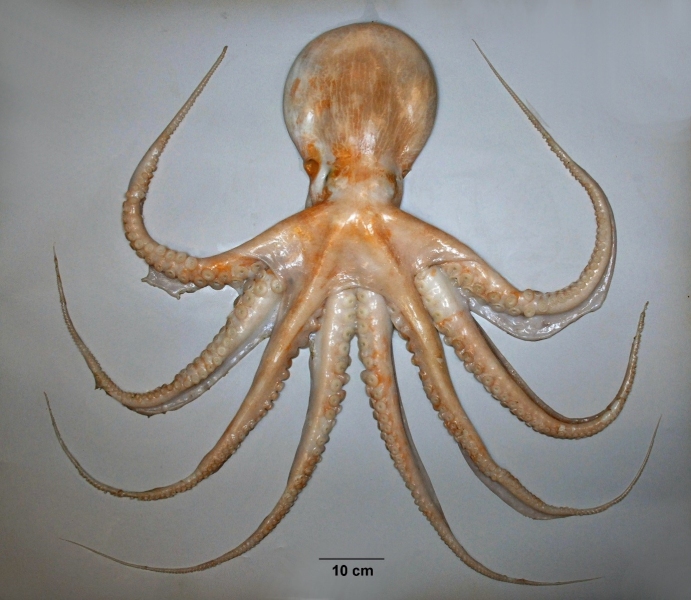One of the ocean’s most elusive critters is about to meet its match as NIWA scientists voyage south hoping to film them in action – and bring a few samples home.
The endemic yellow octopus is one of the key prey species of the endangered New Zealand sea lion. NIWA fisheries scientist Dr Jim Roberts says the species is large and probably abundant but little is known about them.
“Sea lions eat in the order of about one million octopi a year at the Auckland Islands alone, yet only about 50 specimens have been caught by scientists.”
“Somehow they evade trawl nets. They either squeeze out of nets or avoid going into them at all. I think they’re cleverer than the average fish.”
Dr Roberts says the largest measured had a length of 1.4m and weighed 5kg, but “we’ve caught so few that don’t know for sure how big they get.”
First prey survey of New Zealand sea lions
NIWA’s flagship research vessel Tangaroa headed to the waters around the Auckland Islands and Stewart Island last Friday to conduct the first prey survey of New Zealand sea lions.
The voyage is crucial because the New Zealand sea lion is one of the world’s rarest, and the main breeding colony in the Auckland Islands has declined by half over the past 15 years.
Dr Roberts has been studying the decline in the sea lion population for several years and says it is unlikely to be due to a single factor.
“Although we can say with a high degree of probability that sea lions are suffering nutritional stress. This is affecting their reproduction and may be contributing to low survival of both pups and adults.”
This voyage aims to increase understanding about the difficulties facing New Zealand sea lions by undertaking a trawl survey to describe the distribution and abundance of sea lion prey species.
The scientists have no way of knowing if they will be successful in seeing any yellow octopus but have one trick up their sleeve that just might work. They’re taking 100 yellow octopus pots, which have been purpose-built by NIWA technicians.
Each unit, which will be lowered to the sea floor, comprises two pipes almost a metre long, blocked by a central concrete divider, providing a nook for four octopus at a time.
“We think they might be like their close relatives, which make their homes in dens. Here they live a lot like messy teenagers – leaving the remains of what they’ve been eating just outside their front door.”
“We’re not certain we will catch them this way but if we can get 10 that would be great. If we get 50 we will be delighted and that would enable us to begin describing their biology.”
Another piece of the puzzle is describing the locations of sea lion prey around the Auckland Islands which in addition to yellow octopus, includes arrow squid, hoki and red cod.
Underwater cameras will be used as part of the prey survey that will help build up a picture of the density and depth of the prey species, as well as their habitat.
“This is a critical knowledge gap for us. NZ sea lions can dive deeper than 600m and feed in one of two ways – on the bottom or mid-water. Previous research has shown that sea lions feeding mid-water are about 10kg heavier than those feeding on the bottom.
“So whatever is being eaten there is keeping them in a better condition – but it’s also to do with availability of prey and how hard the sea lions have to work to get it.”
A female sea lion spends about two-thirds of her time at sea seeking food for her pup so the amount of energy needed to source enough prey plays a key part in whether the species thrives.
Dr Roberts said improving knowledge of the prey of NZ sea lions is a vital step towards teasing apart the causes of decline at the Auckland Islands.
A sea lion exclusion device, or SLED, will be used in the trawl surveys during the month-long voyage which is being funded by the Ministry for Primary Industries.

